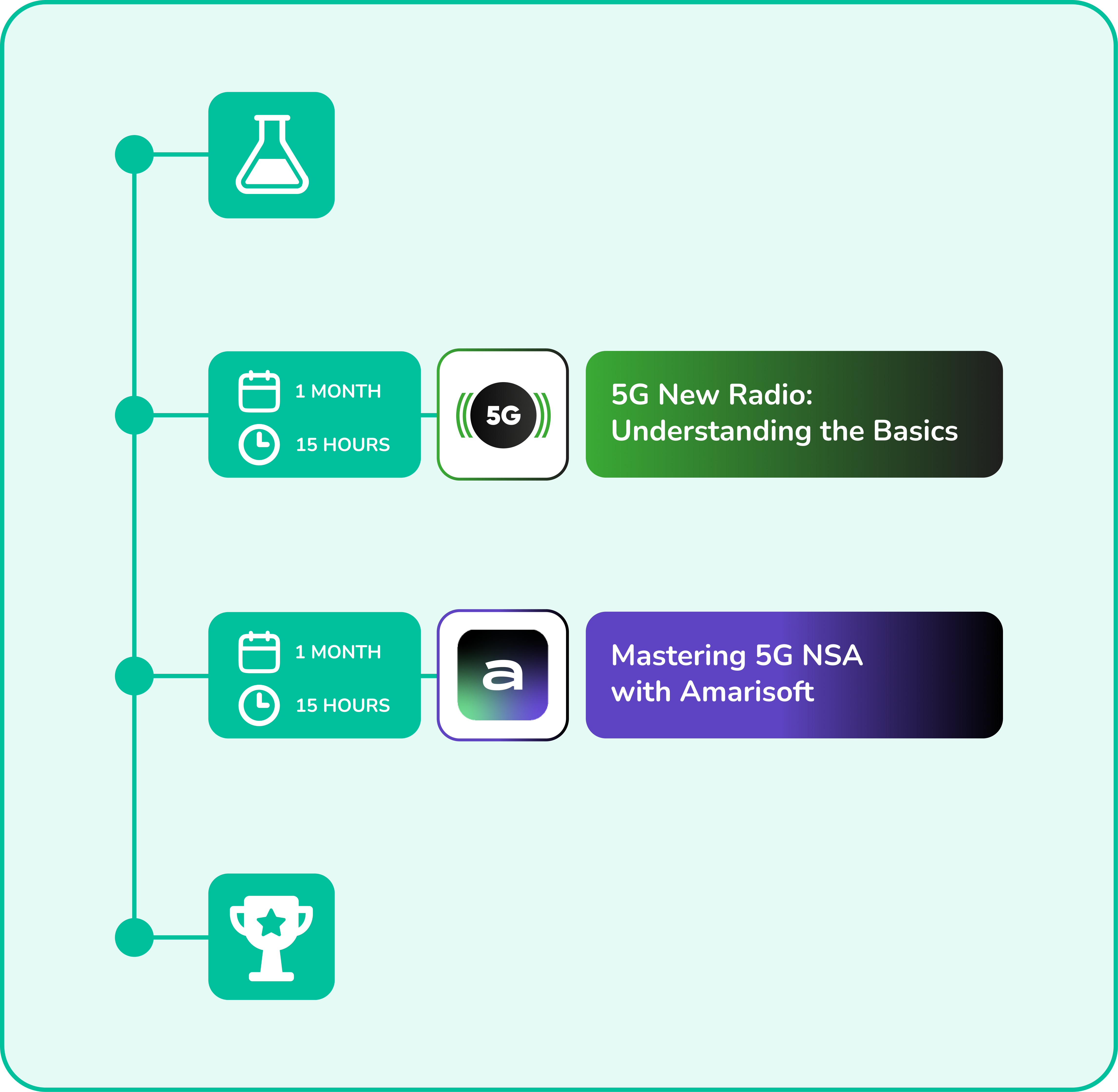

5G New Radio: From Beginner Steps to Proficiency
This Learning Path offers a comprehensive journey into 5G radio technology, starting with beginner-level concepts such as 5G NR architecture, frequency bands, and basic signal processing. As you progress, you'll explore advanced topics like beamforming, massive MIMO, mmWave, and dynamic spectrum sharing. Hands-on labs provide practical experience in configuring, optimizing, and analyzing 5G radio interfaces, equipping you with the expertise to master 5G radio technology for modern wireless networks.
About The Learning path
Audiences
Learning Path Flow:




Lab Architecture:
The 5G Radio beginner setup includes core network components like AMF and UPF, along with the radio access network, user equipment, and visualization tools such as Wireshark. Wireshark helps analyze packet exchanges in the 5G NR portion, providing insights into radio network behavior. Additionally, the architecture features a throughput measurement tool for testing and validating 5G radio concepts, crucial for optimizing performance and ensuring network reliability.

Lab Objectives:
- Gain the ability to assess and differentiate public, private, and hybrid 5G network deployments, understanding their architectures, impact on radio access, and real-world applications.
- Develop expertise in identifying and mitigating 5G radio deployment challenges, such as fading, multipath interference, and spectrum utilization, to optimize network performance.
- Build a deep understanding of 5G New Radio (NR), including TDD/FDD frames, SUL/SDL, and how these technical aspects influence network efficiency and scalability.
- Learn how to apply Dynamic Spectrum Sharing (DSS) to optimize frequency allocation, improve spectral efficiency, and enhance 5G network flexibility.
- Gain hands-on experience in measuring 5G NR throughput, configuring numerology settings, and leveraging carrier aggregation for improved data rates and spectral efficiency.



Lab Architecture:
This Hands-on Training consists of a virtualized Evolved Packet Core alongside a radio access network that consists of a testbed connecting a gNodeB, an eNB, and a UE allowing the user to explore diverse radio and core protocol stacks, with the flexibility to manipulate and configure various scenarios and modes.

Lab Objectives:
- Gain practical experience in configuring and testing 5G networks using Amarisoft.
- Develop expertise in radio fundamentals, improving signal quality and interference management.
- Master 5G RAN optimization by analyzing and adjusting key transmission parameters.
- Strengthen mobility and QoS management skills for seamless handovers and traffic control.
- Enhance network performance by optimizing MIMO, bandwidth, and noise mitigation techniques.
Related Learning Paths
Explore LabLabee’s curated Telco Cloud & Enterprise Learning Paths

